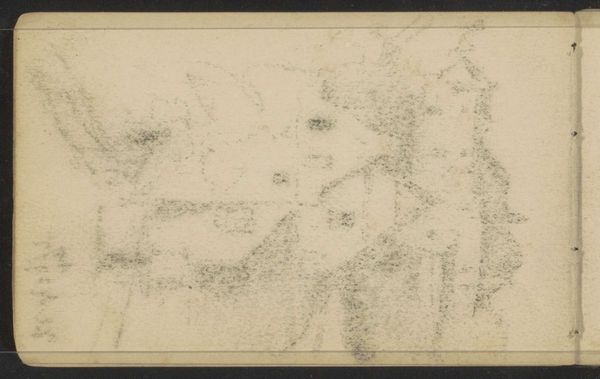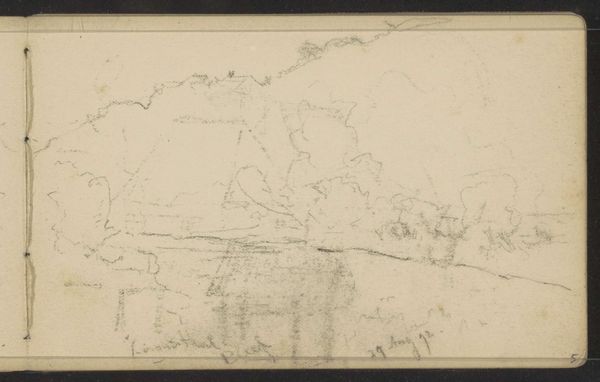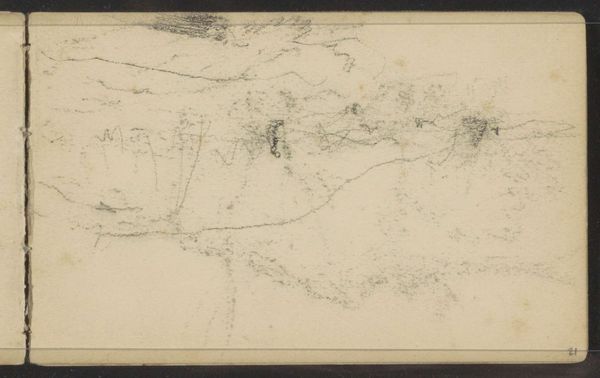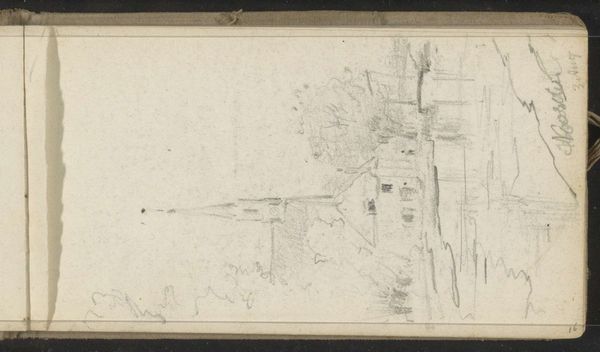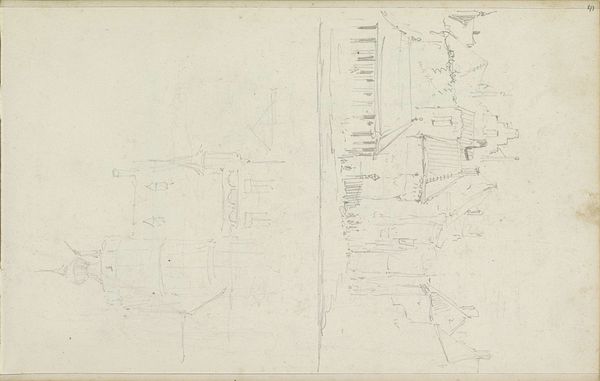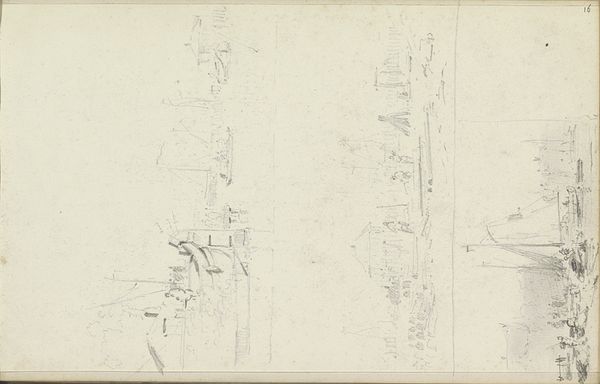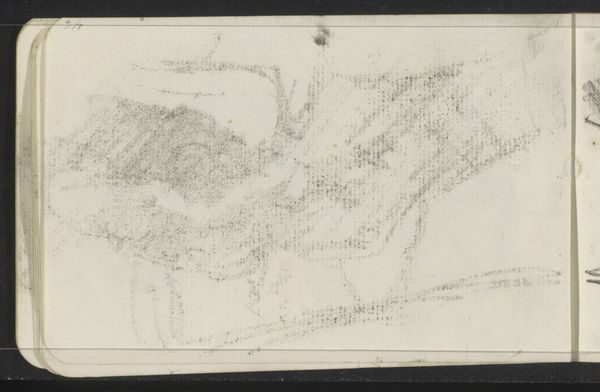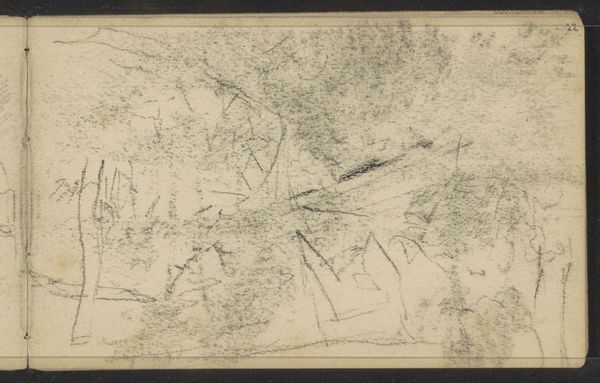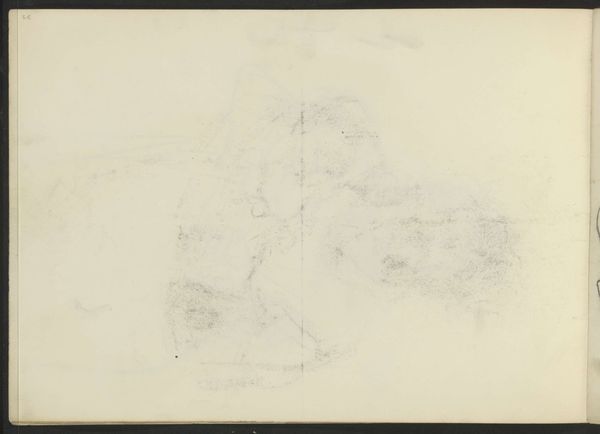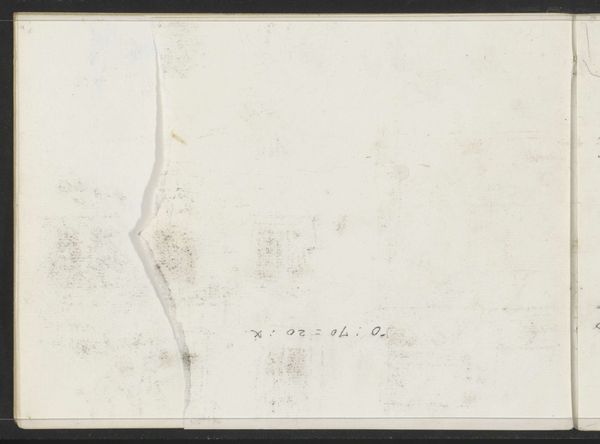
Dimensions: height 95 mm, width 154 mm
Copyright: Rijks Museum: Open Domain
Curator: The work before us, titled "Abklatsch van de krijttekening op blad 14 recto," which translates to something like "Impression of the chalk drawing on page 14 recto", was created by Willem Cornelis Rip in 1892. It’s a drawing, using pencil on paper. Editor: It has an ephemeral quality to it. Almost like a ghost of a landscape. There’s a definite stillness, and perhaps a subtle melancholy woven into those faint lines. Curator: Interesting that you mention melancholy. Given its status as an impression, a trace of another work, one wonders about its function for Rip. Was it merely a record, or did the act of creating this “abklatsch”—a kind of rubbing or transfer—hold particular significance? Perhaps connected to broader trends in reproduction techniques during this period? Editor: I’m intrigued by the idea of "reproduction." Pencil and paper lend themselves to a certain type of production: preliminary, immediate, readily disseminated… and I’m thinking about the role of sketches in academic painting. The flatness and use of pencil rather than charcoal evokes associations of studies and student practice. But who was consuming them? Did Rip's choices enable its circulation, or were these intended for more private viewings and a small coterie of fellow landscape artists? Curator: Indeed. The 'public' Rip envisioned for these could illuminate his artistic intentions and how the artwork participated in societal currents around art appreciation in the Netherlands at that time. Did Rip envision these studies as preparation for something greater? Or were the drawings the culmination of his exploration into the rural and painterly scenes in the region? Editor: And let’s think, too, about the actual materials themselves: Where was the paper sourced? How were pencils viewed at this time – mere tools or significant, accessible technologies available for capturing a direct experience? Its unassuming nature pushes us to acknowledge its value as material and the work and choices behind the object's presence. Curator: The socio-political contexts are certainly relevant: Rip, who spent many years in military service, became later in life a successful landscape artist affiliated to The Hague School. The military landscapes from his active years shaped his later interpretation of landscapes from around The Hague. This print seems different and it feels quite raw. Editor: So, in short, whether intended for private contemplation or the public sphere, “Abklatsch van de krijttekening op blad 14 recto" invites us to look beyond the landscape itself, considering both its art historical position and the act of making and re-making in defining its value. Curator: Agreed. It provides a tantalizing view into the methods, motivations, and cultural underpinnings of 19th-century landscape art.
Comments
No comments
Be the first to comment and join the conversation on the ultimate creative platform.
